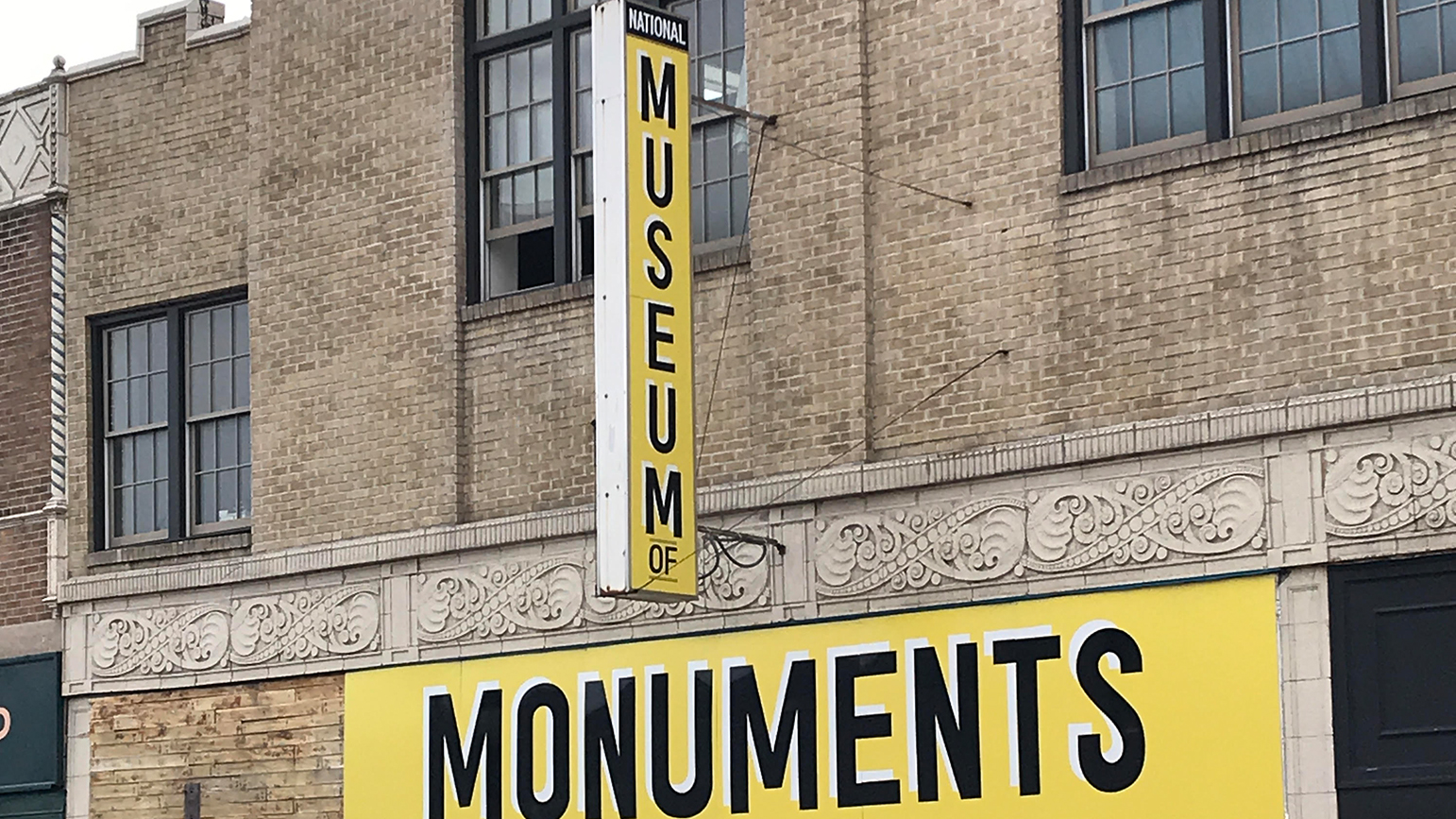
Professor Jon Rubin and Joseph del Pesco’s three-part installation “Monuments, Ruins, and Forgetting” is part of “Counterpublic,” a triennial public art exhibition scaled to a neighborhood and organized by The Luminary. “Counterpublic” brings groundbreaking contemporary art to the barbershops, bakeries, parks, and taquerias that anchor Cherokee Street and the surrounding neighborhoods of South St. Louis and that act as gathering spaces for the many communities living in the area. The exhibition is on view April 13 through July 13.
A three-part installation consisting of storefront signage, street posters, and musical performances, “Monuments, Ruins and Forgetting” starts with a prospective National Museum that—over the course of three months—presents a micro-narrative about historical progression.
How does a nation or city or neighborhood decide what to collectively remember? Which histories are deemed worth saving and which are ignored, denied or forgotten? How long does it take for monuments to become ruins, or for once widely known stories to be forgotten?
There are now, in the US, more museums than Starbucks and McDonalds combined, and all of them are collecting and narrating history. In addition, many American cities, including St. Louis, have opened self-styled national museums, attempting to connect national narratives of exceptionalism to local identities. What does this proliferation of museum-making tell us about where we are in the arc of American culture and empire? Should we be imagining more museums?
“Monuments, Ruins and Forgetting,” speaks to a cyclical process of change—the appearance of new directions and potential futures alongside remnants of the past, soon faded from memory.




